Pattu
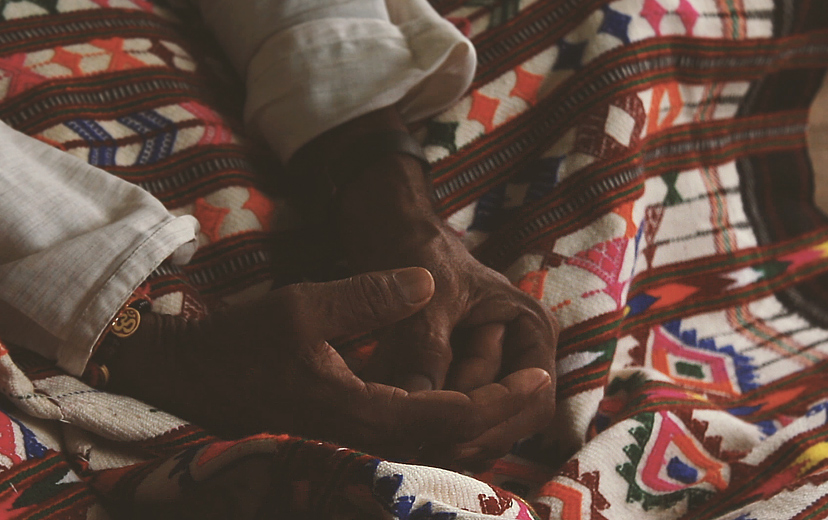
Away from the hustle of city life where Sun gleams bright over deserted roads, Some unmapped lanes take you to a land of beautiful tales. Set in Rajasthan, a state situated at the colour belt of India is a small Dhani (a settlement) named Karwa. Also known as Bunkar ki Dhani, it is the homeland of Pattu. Evolved into a vibrant and wonderful personality, Pattu was born and nurtured amidst dried lands and lost lanes of Karwa.
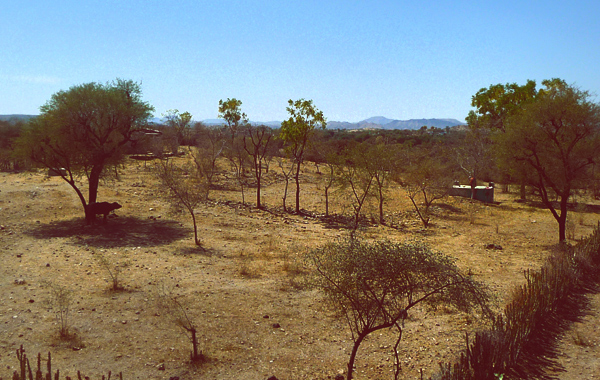
Acquired by the Meghwal community, the land is home to people who live here as one big family. Sounds of conversations and giggles cheer up the otherwise dull and dry neighborhood. Bougainvillaea decorating tiny houses and courtyards engulfed in the sweetest aroma of petrichor. Once home to over 25 artisan families, now only a few dwindling numbers live here. A small settlement of about 10 houses made with mudbrick is slowly though surely powdering away.
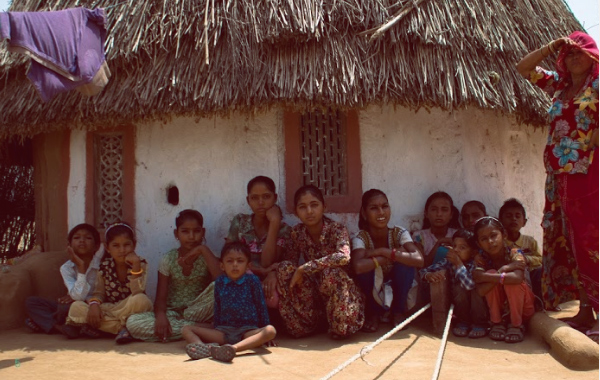
People of dhani grow crops such as jowar and bajra for household consumption as well as selling among fellow weavers thereby creating a sustainable lifestyle locally within the village. Apart from farming in summers they also weave Pattu… With no map to the time of its origin, the craft of Pattu making is that of fine weaving with alluring geometric pattern, woven with finesse by the time honed master craftsmen. The name of the craft however comes from the word ‘patti’, which means thin strips of cloth in regional language.
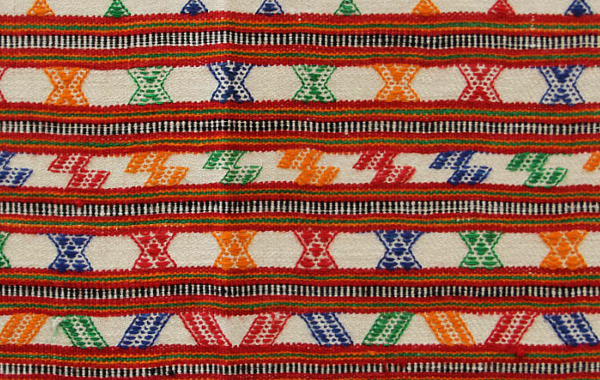
All the woven produce earlier was used by the community itself. Shawls were made and skirts were stitched for women. The wool collected from the livestock made winters warmer for their families. The blankets as well as the cots were covered with pattu. But as time passed, weavers also started to barter it for rice and millet with other villages. Recalling the good old days when his father used to weave Pattu, Master weaver Isa Ram vividly remembers the deep browns of the natural wool intertwined with warm whites.
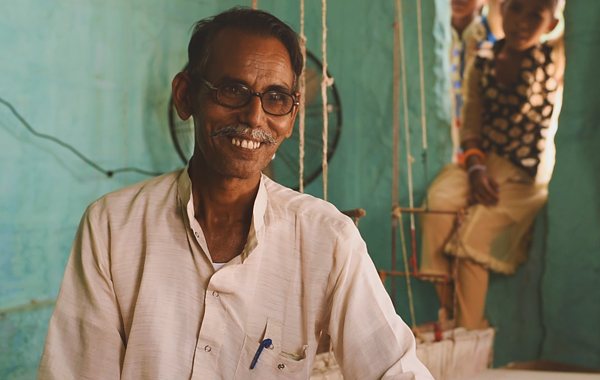
The wool was obtained from sheep using razors locally known as ‘Ustra’. The collected wool was then used in its natural colours. Deep browns with warm whites… This Desi wool or raw wool was then supplied to the women of the community, who then hand spun it in their houses. Times changed, so did the sourcing of their raw material. Cotton and wool yarn is now sourced from Bikaner.
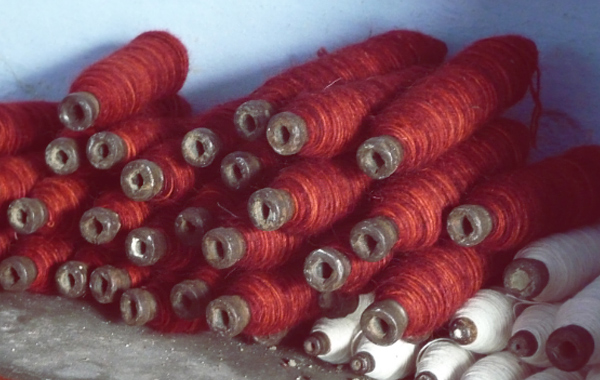
After purchasing the yarn, local dyers are consulted. Using vat dyes, sulphur dyes, naphthols for cotton and acid dyes to make wool color, bright colors are induced into the yarn. The craft over the years gained popularity with the introduction of bright red, bold pink and fresh orange into its otherwise muted color pallet. These became the colors adorning the life of pattu and weavers alike.
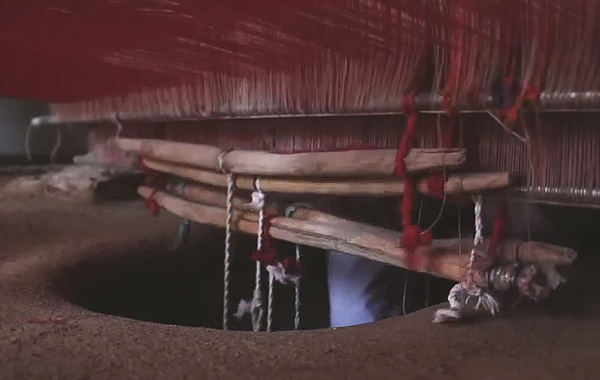
The khaddi, as the artisans call it, is a pit loom users by these weavers traditionally to weave Pattu. It is located at the rear end of the shed and just behind the pit is the weaver’s seat. The weave used is the twill weave and has two kinds of ornamentation mainly. Weavers of Karwa use different types of designs on Pattu to make a variety of shawls such as malani, bhojsari pattu. In a regular Pattu weave horizontal borders are running along both sides, a number of thin lines of weft-dominated weaves embellish the shawl. For small motifs on the body and border, weaver picks up the selected warp yarns manually and passes the extra weft yarn through them. Repeating the process over and over again for each motif every time the weft passes through, a pattu shawl is made in upto 10 days of time.
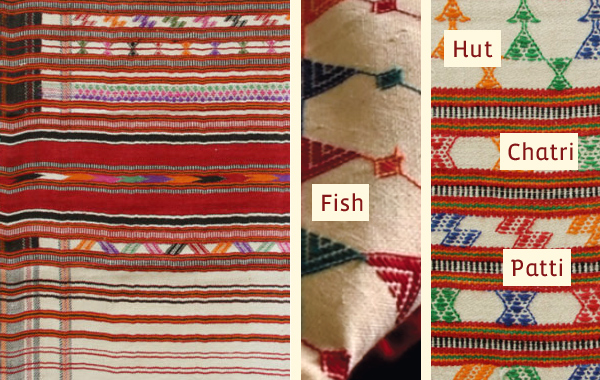
What is interesting about this weave is that unlike other weaves in which the borders are woven together with the shawl, pattu uses extra weft technique which looks like kashida embroidery. It is the sole identifying character of a pattu among other woven textiles. All the design motifs have always been inspired by the surrounding landscapes; machli (fish), burdi (hut), tataiya (wasp), chatri (triangular shade), patti (stipes), Bird (chida), trees etc. are depicted by using geometric shapes and patterns.
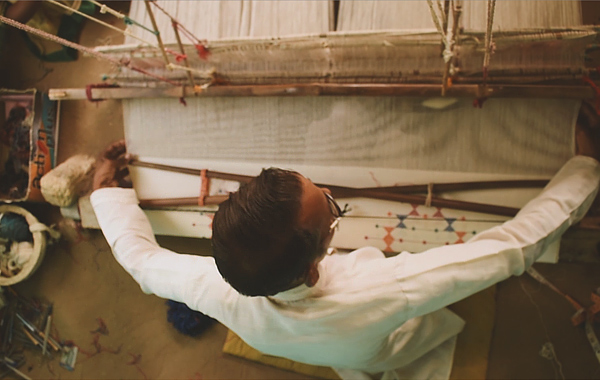
The land of karwa echoes with weavers beating against the tune of time, demanding value for the craft and their skill. In a world constantly exhilarating to live in the future, it’s the craft that gives us a chance to breathe in the moment. Weaving with hope, the weaver does not only bring yarns together but also weaves the fabric of an inseparable society.

Lives today are sombre in Karwa, love for skill and care are things of the past! Weavers now are witnessing the downfall of their craft more than ever. Standing in the face of adversity, refusing to abandon Pattu, Isa Ram opposes the idea of a city life with its better paying jobs even as a construction labourer. People of karwa take pride in being the caregivers of Pattu in times when only ruthless efficiency, devoid of humanity is valued. “Without gratitude for beauty and grace, there’s no appreciation for the beauty of our own kind” says Isa Ram.
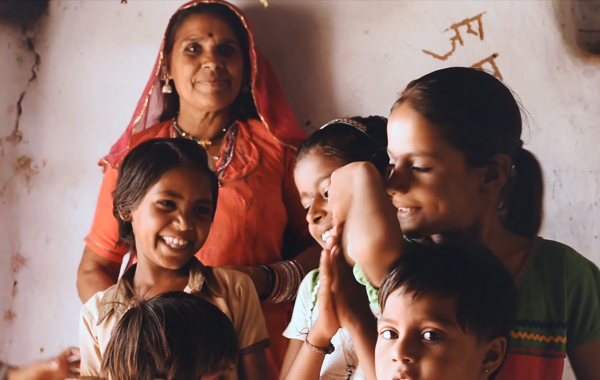
These tiny mud dwellings house people with hearts of gold in a rather stark contrast. The gold shines to you the very moment you are welcomed with big bright smiles that don’t cost a dime. It is in moments as such that you realise that being happy is one thing and wanting happiness a lot of other.
Text & Images by | Suruchi Rohani & Sakshi Meena

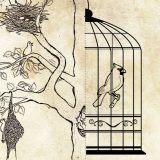
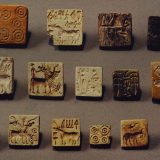








Parmar Jaimin
I want to know pattu weaving
surmai
do you know if this weaving still takes place in karwa? any contacts we could get?
Cheree
Informative article but I wonder it would help the weavers. Wouldn’t it be nicer if you had posted the contact number of the weaver? At least, the commoners like me might have placed an order or two. Or some one could have guided them on how to make an Instagram profile.
Disha
Beautifully written. ❤️
Samik
Very informative. Pls share contacgs of these weavers ! Thanks.